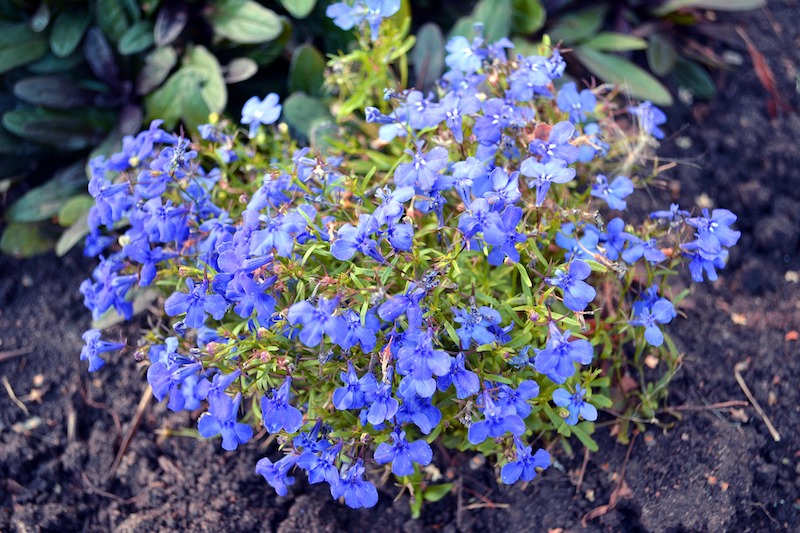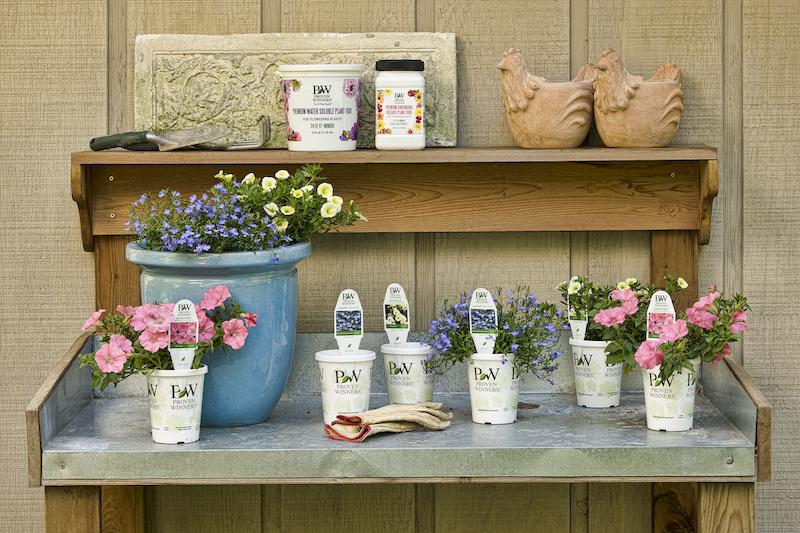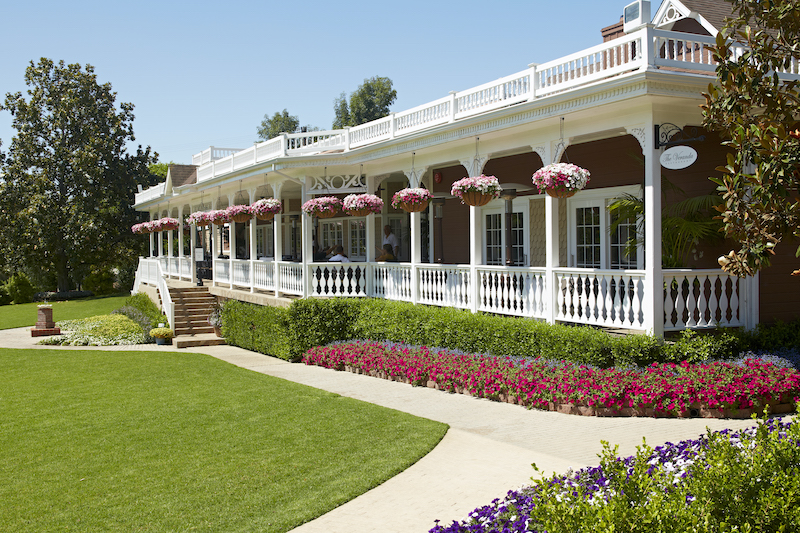Lobelia is most commonly a compact and colorful flowering annual (Lobelia erinus). There are some lobelia varieties such as Cardinal Flower (L. cardinalis) that are cold hardy perennials and others such as Great Blue Lobelia (L. siphilitica) that are tender perennials. Lobelia is most commonly used as a bedding plant in borders, ground covers, rock gardens, containers, and hanging baskets. Lobelia is commonly known as Indian Tobacco due to its tobacco-like smell.

These plants are relatively easy to care for and tolerate conditions from full sun to part shade and typically bloom up to the first frost of the season. Planting lobelia the correct way is critical to growing healthy plants. Read below to learn about the best way to plant lobelia.
What You Need To Plant Lobelia
- Shovel
- Compost, manure, or granular fertilizer
- Garden spade
- Good location
- Water source
- Mulch

Where to Plant Lobelia
Plant lobelia in well-drained, rich soil. If planting in containers, use an all-purpose potting mix. Choose a planting location that gets 4-6 hours of sunlight each day with adequate space for the plants to mature (depending on variety). Dig a hole to the depth of the size of the pot you are transplanting and two times the size of the width.

Lobelia Spacing
Smaller varieties of lobelia do not need growing support. Most of the annual lobelia varieties have upright bushy habits or moderate trailing habits. Choose the number of lobelia plants for the desired impact of your planting location. Lobelia plants can spread anywhere from 6-18”, depending on their variety. Space plants far enough apart to allow them to reach their mature size.
Steps To Plant Lobelia
Once you have selected a good planting location for your lobelia with adequate sun exposure, you are ready to begin planting. Gather thor planting supplies. Dig a hole that is twice the width of the pot in a planting location that has rich and well-drained soil. Reserve the soil from digging the hole to the side of your pot or garden. Add a scoop of compost, manure, or a granular fertilizer to the base of the planting hole. Gently loosen the root ball of your lobelia and place it into the hole, lining up the crown of the plant with the base of the soil. Back fill with your reserved soil and firmly press down and pack the soil around your lobelia plant. Add mulch around the base of the plant and thoroughly water your newly planted lobelia.
Step 1 - Choose a good planting location
Step 2 - Dig the hole
Step 3 - Add compost or granular fertilizer to the hole
Step 4 - Loosen the root ball of your transplant and place in the hole
Step 5 - Backfill the hole and firmly pack the soil
Step 6 - Add mulch around the plant and water in thoroughly
When to Plant Lobelia
The best time of the year to plant an annual or perennial lobelia is in early spring after the last threat of frost. While spring is the best season to plant lobelia, these plants can be planted at any point within the growing season from spring to fall. The best time of day to plant is in the early morning or in the early evening outside of the peak heat and sun of the day. If you are planting lobelia in the middle of the growing season, be sure not to plant during the hottest point of the day, and closely monitor water conditions of your newly planted lobelia for several weeks.
Transplanting Lobelia
Flowering annual lobelias are very low maintenance and easy-to-grow plants that do not require splitting or dividing. They typically mature to a desirable size within the growing season and then die back at the end of the season.
Perennial and tender perennial varieties of lobelia, on the other hand, do benefit from periodic division and splitting. Cardinal flower should be split, divided, and transplanted every 2-3 years in the early fall after flowering. To divide a this plant in the fall, carefully dig up the whole root ball and gently split into separate crown pieces. Replant the crown pieces in desirable locations a few weeks before the first frost following the steps outlined above.
 |
Author Katie Endicott - Published 9-14-2022 |
